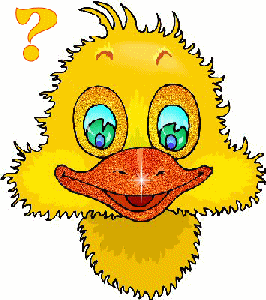Quiz November

glitter-graphics.com
Quiz < ----- Click here to download
1st Place: Catarina, Manuel, Pedro and Vanessa
Quiz October
![]()
1st Place: Tiago and Douglas
2nd Place: Cátia
Quiz < ----- CLick here to download
Simple Present

Exercise < ---- Click here to download
Simple Present

The Simple Present is frequently used in English. It is also called Present Simple.
1) repeated actions (every day, always, often, sometimes or never)
2) things in general
3) fixed arrangements, scheduled events (e.g. timetable)
4) actions in the present - one follows after the other (first - then, after that)
5) instructions
6) after special verbs, which are normally not used with the Present Progressive (These verbs express states, possessions, feelings etc.) be, believe, belong, hate, hear, like, love, mean, prefer, remain, realize, see, seem, smell, think, understand, want, wish
Exercise < ----- Clicke here to download.
Present Simple (negative)

Negatives in the simple present are formed by adding don't or doesn't before the simple form of the verb:
In other words, only THIRD PERSON SINGULAR subjects (he, she and it) have DOESN'T -- the rest have DON'T.
Exercise < ----- Click here.
Present Simple (affirmative)
- Pay attention to the present simple (affirmative):
• We put the verb in the simple form in the majority of cases;
• We put ‘s’ in the 3rd person singular (he/she/it);
• We put ‘es’ in the 3rd person singular (he/she/it), when the verbs end in - o - ss - sh - ch - x;
• We put ‘ies’ in the 3rd person singular (he/she/it), when the verbs end in - y.
Exercise 1 < ----- Click here to download.
The family

glitter-graphics.com
Family wordsearch < ----- Click here to download
Possessive Pronouns

Exercise 1 < ----- Click here to download
Exercise 2 < ----- Click here to download
Means of transport
![]()
glitter-graphics.com
Exercise < ----- Click here to download
The UK flag

A Bandeira da Grã-Bretanha é conhecida como Union Jack. O termo Jack significa um estandarte para ser içado a bordo dos navios, pelo que o termo oficialmente aceite é Union Flag. Remonta a 1801, ano em que a cruz de São Patrício (diagonal vermelha), representando a Irlanda, foi sobreposta à cruz de São Jorge (vermelha) Inglaterra e à cruz de Santo André (diagonal branca sobre fundo azul), Escócia.
Personal and Possessive Pronouns

A pronoun can replace a noun or another pronoun. You use pronouns like "he,"she" and "you" to make your sentences less repetitive.
A personal pronoun refers to a specific person or thing and changes its form to indicate person, number, gender, and case.
A possessive pronoun indicates that the pronoun is acting as a marker of possession and defines who owns a particular object or person.
Exercise 1 < ----- click here to download
Exercise 2 < ----- Click here to download
Pronouns Game < ----- Click here to play






















